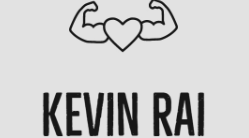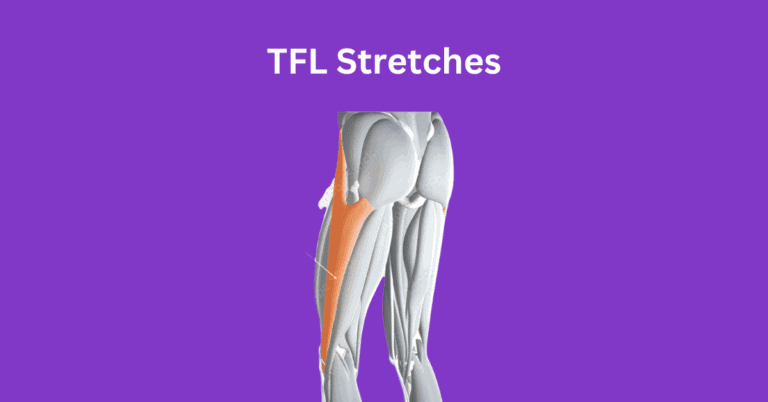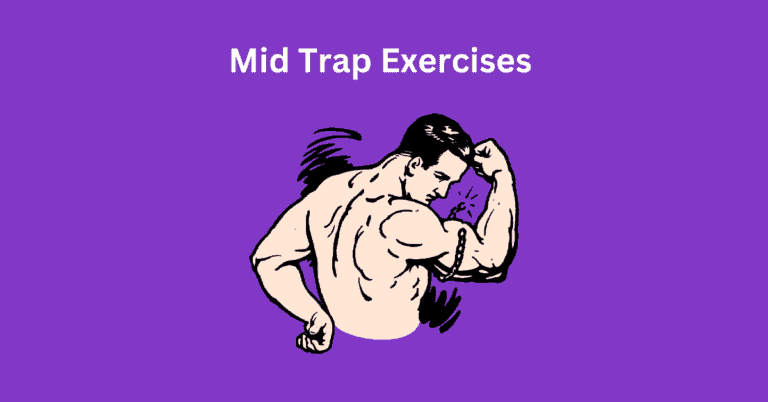10 Best Low Trap Exercises: Build Strength & Stability
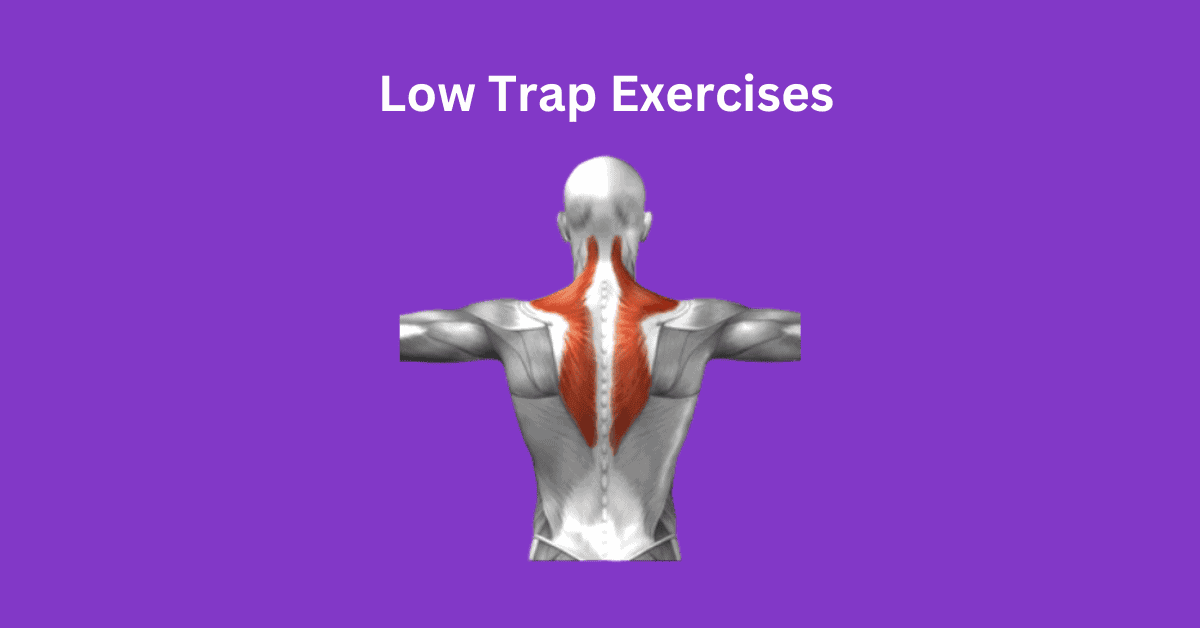
The low trap exercises are probably one of the least popular exercises in the gym, as the other bigger muscles steal the spotlight such as the upper and mid traps.
However, they play a major role in maintaining proper shoulder alignment, preventing imbalances, and even giving a nice aesthetic look.
In this guide, I will explore the best low trap exercises, additional tips, the anatomy & function of the muscle, and its benefits~ let us dive in.
What Is The Low Trap Muscle?
The trap or trapezius for full form, is a large muscle that extends down the back of the neck and upper spine to the middle of the back. It’s a key muscle involved in various movements of the shoulder girdle and neck, as well as supporting with keeping proper posture.
Trap muscle can be divided into three parts, the upper, mid, and lower which is the focus of this article.
The lower trap is located along the midline of your back and has a triangular shape as shown in the picture below.
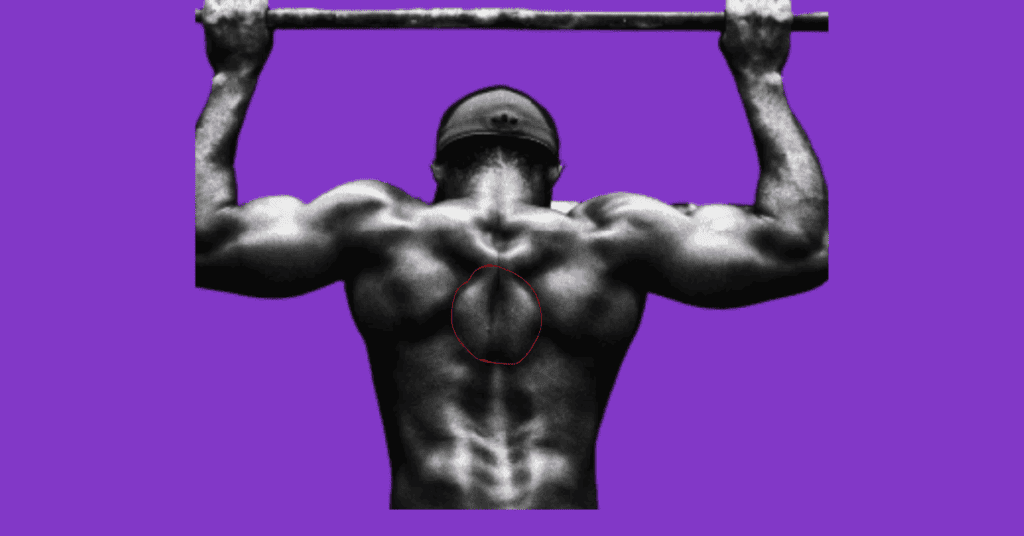
Its primary function is to pull the scapula downward and medially, which is known as scapular depression and retraction.
What Are The Function Of The Low Trap Muscle
There are a few functions that the lower traps partake in:
Scapular Depression
The scapular depression refers to the downward movement of the shoulder blade (scapula). The lower trap plays a big role in this action by contracting to pull the inferior angle of the scapula downward.
This process is important for stabilizing the shoulder joint, especially during movements that involve raising the arms overhead like overhead press.
It helps control the movements of the scapula by maintaining a stable shoulder position.
Scapular Retraction
The scapular retraction involves pulling the shoulder blades towards each other.
The lower trap contributes to this action by working together with other muscles like the middle taps and rhomboids.
Scapular retraction is essential for maintaining good posture, as it helps counteract the tendency for your shoulder to round forward.
Exercises that involve scapular retraction, such as rows, help strengthen the lower trapezius and associated muscles, promoting a more upright and aligned posture.
List Of The Best Low Trap Exercises
Prone Y raise
Prone Y raise
The prone Y raise is a great exercise for beginners to start building strength in the lower trap muscles.
This is because you don’t have to lift any heavy loads~ you will be just working with the weight of the arms.
Steps to performing the exercise
- Prior to starting the exercise you have a decision to make, you can either do it on the floor or a flat bench.
- After deciding, lie face down on the floor or bench.
- Place your arms in front of you with a neutral grip (thumbs facing the sky).
- Without lifting your chest off the floor or moving your lower body, lift your arms up in a Y shape as high as possible.
- At the top focus on squeezing your shoulder blades together.
Tips
- Try and keep your thumbs pointing upwards toward the ceiling throughout the movement as this will help you get a better contraction.
- Lower your arm in a nice slow and controlled pace~ don’t just let your arms drop. Doing this will help you build additional strength & stability in the low-trap muscles.
Cable Y Raise
Once you feel confident with the prone y raise, you can move to cable y raise for added resistance.
Also called the victory pose raise, making it a suitable exercise to celebrate your strength gains.
Steps to performing the exercise
- Attach a D-handle to a pulley cable machine.
- Adjust the weight to something you feel comfortable with.
- Hold the D-handle with both hands with your palms facing the floor.
- Take a couple of steps back to create tension on the cables, with your arms extended in front of you at about shoulder height.
- Take a deep breath and lift the D-handles upwards and outwards at a 45-degree angle from your body to form a Y shape.
- Raise your arms until they are in line with your head and squeeze your shoulder blades.
- Then slowly lower your hands back to the starting position.
Tips
- Pause for 2-3 seconds on the top of the exercise to get a better contraction of the muscle.
- Avoid using momentum by swinging your upper body to lift the weight up, instead focus on using your arms and shoulders muscles.
Overhead Farmer’s Walk
This is a combination of two exercises~ overhead press and farmers walk.
When you walk around with weights above your head, the lower trap needs to work extra hard to stabilize the shoulder blade~ leading to strengthening of your muscle.
Steps to performing the exercise
- Choose a suitable pair of weighted dumbbells.
- Pick them up carefully and lift them over your head. I would recommend you start with a lightweight at first.
- Slowly walk forward to a distance you desire and walk back to the starting position.
- You can perform this exercise by walking a certain distance or for a specific number of repetitions.
Tips
- Don’t forget to engage your core throughout the movement, this will help you control the weight while walking and minimize the risk of you losing balance.
- Extend your elbows fully and have the weights in line with your shoulders.
Cable Face Pull
Face pull is a great exercise for not only targeting the lower trap but also improving your shoulder health.
This is all thanks to the different muscles it targets such as deltoids and rotator cuff which all work together to allow optimal shoulder movement & function.
Steps to performing the exercise
- Attach a rope to a pulley cable machine.
- Adjust the height of the cable, so it’s positioned above your head.
- Grab the rope with your thumbs pointing upwards and take a couple of steps back to create tension.
- Begin by retracting your shoulder blades then pull the rope towards your face.
- As you pull, aim to get your elbows parallel to the ground and squeeze the shoulder blades together.
- Slowly and with control, extend your arms back to the starting position.
Tips
- If you have trouble balancing, widen your foot placement to hip-width apart for added support.
- Don’t hyperextend your back when pulling the weights as this can put unnecessary pressure on your spine.
Reverse Shrugs
Reverse Shrugs can be done in various ways, from hanging to seated and even by using a barbell.
But the best method to execute the movement that I have tried is by using a lat pulldown machine.
This movement solely focuses on scapular depression movement, which involves pulling the shoulder blades down. While strengthening your lower trap muscle this exercise also teaches your body how to depress your scapular correctly.
Steps to performing the exercise
- Adjust the weight on the pull-down machine
- Clip in a long bar, which you may have seen people using.
- Grab onto the bar with a wide grip (wider than shoulder-width).
- Sit on the seat and get your thighs under the pads.
- To engage the movement, think about pushing your shoulder blades down.
- Hold for a few seconds and allow your shoulder blade to go back to the starting position.
Tips
- Your arms should not get involved in pulling down the weight, all the movement should be done through your shoulder blade. Therefore the range of motion of the exercise is going to be small.
- Don’t drop your shoulder too far upwards where it touches your head~ doing this will reduce the tension on the muscles.
Single Straight Arm Pull-down
A single straight-arm pull-down is a variation of your normal pull-down.
While this exercise mainly targets the lats and the muscles of the upper back, you also get the activation on the lower traps.
Since it’s a single-arm movement, it makes it easier to find any imbalances or weakness present in your muscles than when using both arms at the same time.
Steps to performing the exercise
- Attach a D-handle to the pulley cable machine.
- Pull the cable up to its highest position.
- Hold the D-handle with your palms facing the floor and take a couple of steps back.
- Slightly bend your knees and lean forward, while keeping your back flat.
- Without bending your elbow, pull the cable down and a little past your waist
- Hold for a few seconds and slowly return back to the starting position.
Tips
- Your upper body should stay still throughout the movement, if you start swaying, it could mean the weights are a bit too heavy.
- Try not to bend your arm, as this will shift the pressure onto the triceps instead of your back.
Prone Arm Lift
Probe arm lift is another great beginner-friendly exercise.
It’s very similar to the prone Y raise, the main difference is you have your hands by your side during the exercise.
Some people find this exercise to feel better on the shoulders than the prone Y raise~ you can switch between them to see what feels better your you.
Steps to performing the exercise
- Lay face down flat on the floor
- Lift your hands at shoulder height and bend your elbow so your fingers are pointing forward
- Lift your head and your hands off the floor and hold the position.
- Slowly lower your body back down, ready for another repetition.
Tips
- Don’t overextend your lower back, as this can lead to pain or injury in the future.
- If you find the exercise too easy, you can hold a pair of dumbbells for extra tension.
Wall Slides
Strengthening the lower trap is good, but you also need to focus on improving the mobility of the muscles around it to build overall strength and stability~ for this wall slides are great
Wall slides is a hard exercise, so don’t be discouraged if you struggle at the beginning.
Steps to performing the exercise
- Stand with your back against a wall, having your buttocks, upper back and head all in contact with the wall.
- Have your feet 4-6 inches away from the wall.
- Bring your arm to your side at 90 degrees, making sure that your entire forearm and back of your hands are in contact with the wall.
- Slide your hand up as high as you physically can~ the key is to keep all the body parts mentioned above in contact with the wall at all times.
- Slowly slide your hand back down and repeat the motion.
Tips
- If you are struggling, then take a few steps forward and only lean on your upper back. Then slowly take some steps back as you build mobility over time.
- Wall slide stretches your muscles, so don’t force any motion as this can overstrain them and even cause wear & tear.
Bench Scapula Dip
Same as the reverse shrugs, this exercise involves the movement of only your scapula.
Even though the motion is the same, (the depression of the scapula), by having your hands below you will provide a little different stimulus.
Steps to performing the exercise
- Sit at the edge of the bench or any sturdy surface with an upright posture.
- Grip the edge of the surface, with your hands being close to your hips.
- Take a few steps forward so your bottoms come off the surface. Your arms should be straight, and your feet should be on the ground with the knees bent at a 90-degree angle.
- Without bending your arms, lower your body down by bringing the shoulders up towards your ears.
- Press down on the surface to get your body back up.
Tips
- Your legs are only there to support your upper body, they should not get involved in any other way such as helping you push your body up.
- Keep your core engaged to maintain stability throughout the exercise.
Pull Ups
The pull-ups are a compound movement that is great for building muscles & strength in your upper body.
To fully activate your lower trap and do the pull-up correctly, you need to initiate the motion by depression of your scapula as taught with reverse shrugs.
Steps to performing the exercise
- Stand underneath a pull-up bar and grab the bar with an overhand grip. Your hand placement should be slightly wider than shoulder-width apart.
- Lift your feet up and hang from the bar with your arms fully extended.
- Retract your shoulder blade back, then pull yourself up, until your chin is above the bar.
- Slowly lower your body back down.
Tips
Don’t solely rely on your arms to pull yourself up, rather focus on using your upper back muscles.
Avoid flaring out your elbows as this can irritate your shoulder joints, instead try to keep them close to your body.
What Are The Benefits Of Lower Trap Exercises?
There are various benefits to training this muscle:
Improved Posture
The lower trap is responsible for depression and retracting the shoulder blades. When these muscles become weak, the shoulder blade can become elevated and protracted (moving forward).
Therefore by strengthening the lower trap, it will help pull the shoulder blade down and back, aligning them in a more optimal position~ giving you an upright posture.
Improve Upper Body Strength
Even though the lower trap is smaller than other muscles on your upper body, it still holds important value in optimizing your upper body strength.
The reason for this is simple, as mentioned above lower trap is responsible for depression and retracting the shoulder blade. So training the lower trap will provide a stronger foundation for upper movements like overhead press.
Injury Prevention
The lower trap is required in various daily activities like reaching overhead and lifting & carrying weights.
Not training the lower trap will worsen your scapular movement and put excessive strain on your rotator cuff tendons~ making you prone to injuries.
Conclusion
Most people focus on the upper & middle traps as it more visible, but forget about the lower trap which is more hidden.
It’s important you train all three parts of your traps equally to minimize muscle imbalances and improve your shoulder health.
It’s important to note that you don’t have to do all the exercises in the list, pick a few which you prefer and add them to your routine.
P.s
When life pulls you down, let your lower traps lift you up;)
